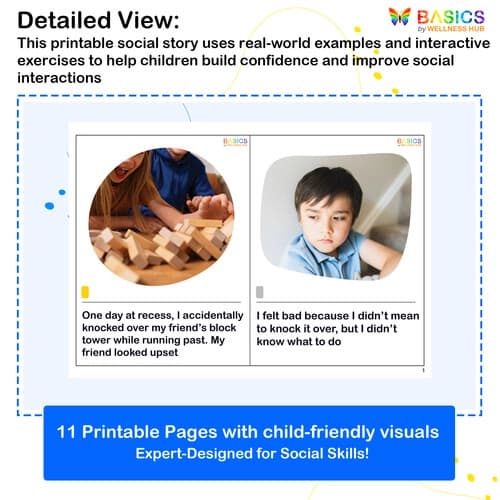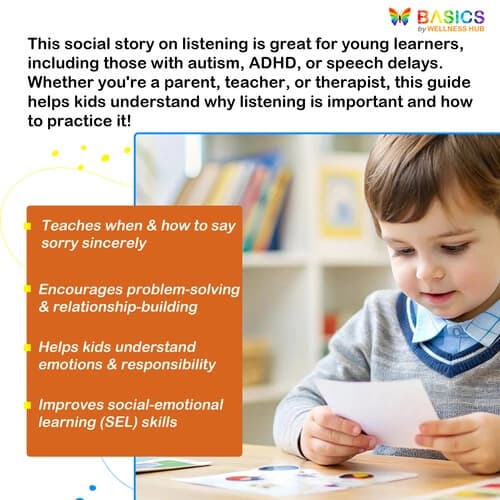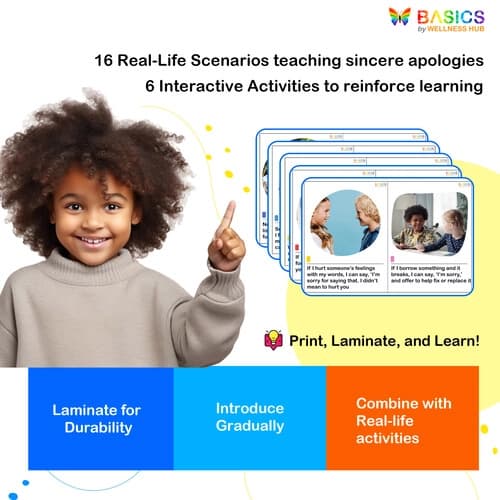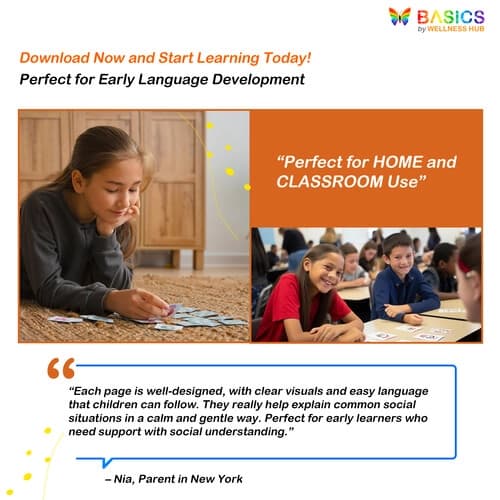



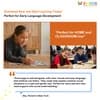

Saying Sorry and Making Amends – Social Story for Kids
₹80
₹160
50% off
0 (0 ratings)
Grade Levels
Pre-K - Grade 3 (Ages 4-9)
Content Overview
Format: Printable PDF, Total Pages: 11, Features (≤15 words): 16 real-life scenarios, engaging illustrations, interactive activities, simple and clear storytelling
Categories
Pages from the Resource
Help children understand the importance of saying sorry and making amends with this engaging social story. Using real-life scenarios and interactive activities, kids will learn how to apologize sincerely and repair relationships. Perfect for children with autism, ADHD, and social-emotional challenges.

Page 1
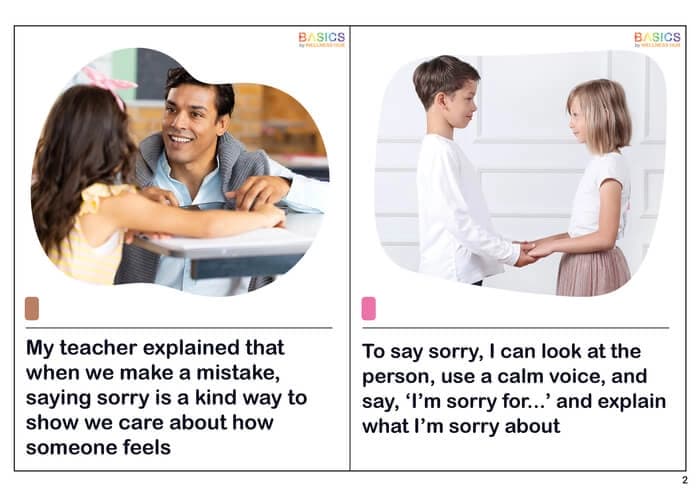
Page 2
What Users Say
0
0 ratings
5
0+
4
0+
3
0+
2
0+
1
0+
5 Stars
Product is Good to use.
1 year ago
Varsha Parent
Similar Products
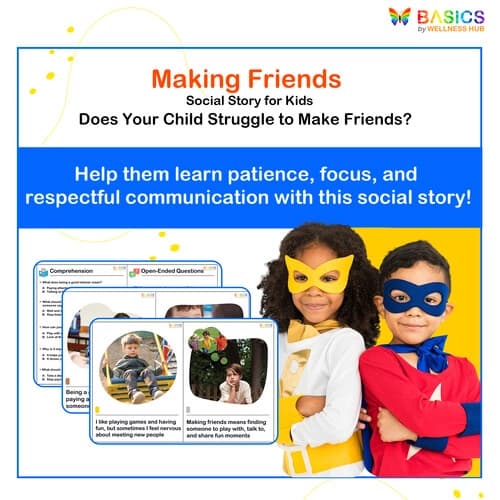
Making Friends – Social Story for Building Social Skills
₹ 80.00
₹ 160.00
50% off
4.9 (52 ratings)

Understanding and Using Polite Words – Social Story for Kids
₹ 80.00
₹ 160.00
50% off
4.9 (48 ratings)
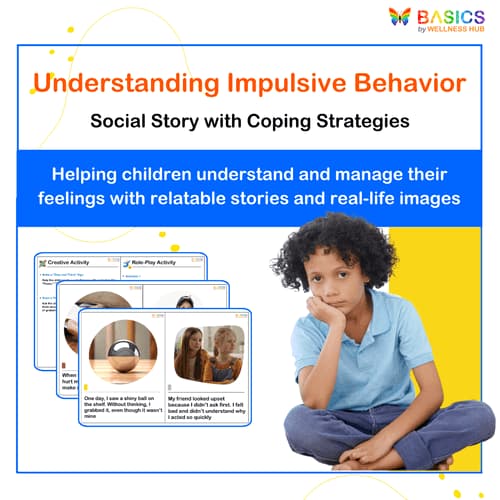
Understanding Impulsive Behavior: Social Story with Coping Strategies
₹ 80.00
₹ 160.00
50% off
4.9 (42 ratings)

Dealing with Anger: A Social Story for Children
₹ 80.00
₹ 160.00
50% off
4.8 (56 ratings)
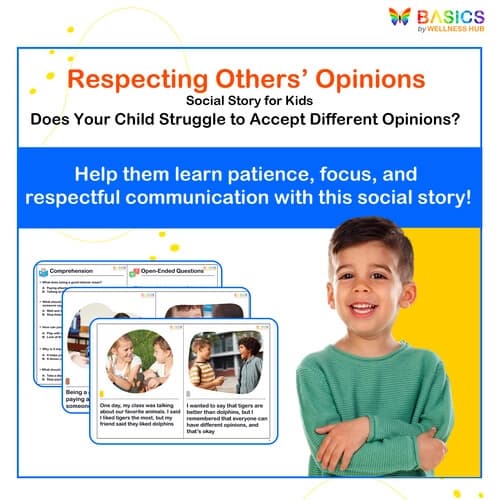
Respecting Others’ Opinions – Free Social Story for Kids
₹ 80.00
₹ 160.00
50% off
4.8 (46 ratings)
About the Product
Introduction
Children often struggle with understanding the importance of apologizing and how to do it sincerely. Some may say "sorry" without meaning it, while others may refuse to apologize out of frustration or embarrassment. Many kids do not understand how making amends can help rebuild trust and friendships.
Common challenges include:
✔ Saying "sorry" just to end a situation rather than to truly apologize
✔ Feeling embarrassed, ashamed, or resistant to admitting mistakes
✔ Not understanding how to fix things after hurting someone
✔ Avoiding apologies due to fear of rejection
This printable social story is designed to:
✔ Teach children why and when to apologize
✔ Encourage sincere apologies and making amends
✔ Provide structured learning through real-life scenarios, illustrations, and interactive activities
✔ Support children with autism, ADHD, and social-emotional challenges
By using this resource, children will learn:
How to say sorry in a meaningful way
The difference between a genuine and insincere apology
How to make amends after making a mistake
Why repairing relationships is important for social development
This social story helps children build stronger friendships, emotional intelligence, and responsible behaviors.
Product Details
- Format: Printable PDF
- Total Pages: 11
- Number of Segments: 16 real-life scenarios
- Features:
✔ Engaging illustrations demonstrating how to apologize sincerely
✔ Simple, clear language for easy understanding
✔ Interactive activities reinforcing social-emotional learning
✔ Designed for home, school, and therapy use
This easy-to-use resource can be printed or used digitally on tablets and computers.
Educational Benefits
1. Develops Empathy & Emotional Awareness
- Helps children understand how their actions affect others.
- Encourages self-reflection and emotional responsibility.
2. Teaches How to Apologize Properly
- Explains the difference between a sincere vs. insincere apology.
- Provides step-by-step guidance on how to say sorry and mean it.
3. Builds Social-Emotional Learning (SEL) Skills
- Encourages children to take responsibility for their actions and words.
- Teaches how to fix mistakes and maintain friendships.
4. Supports Children with Special Needs
- Uses structured, visual learning to help children with autism, ADHD, or speech delays.
- Reinforces expected social behaviors in different situations.
5. Reinforces Real-Life Application
- Covers everyday situations such as:
✔ Apologizing after accidentally hurting a friend
✔ Saying sorry for using unkind words
✔ Making amends after breaking a sibling’s toy
✔ Learning how to show kindness after a mistake
By learning how to apologize and make amends, children will develop positive social habits that support lifelong friendships and emotional growth.
Instructions for Use
Step 1: Read the Social Story Together
- Sit with the child and read through the story
- Discuss each scenario and illustration, ensuring they understand the meaning of saying sorry and making amends.
- Ask guiding questions such as:
- “How would you feel if someone hurt your feelings and didn’t say sorry?”
- “What’s the difference between saying sorry and making amends?”
Step 2: Practice Apologizing in Different Situations
- Role-play various scenarios using real-life examples.
- Use polite phrases such as:
✔ “I’m sorry for what I did. I didn’t mean to hurt you.”
✔ “I made a mistake. Can I fix it?”
✔ “I understand why you’re upset. I will do better next time.” - Encourage the child to practice tone of voice and body language for a genuine apology.
Step 3: Engage in Interactive Learning
- Use the included activities to reinforce learning, such as:
✔ Fill in the blank exercises (e.g., “When I hurt someone, I should say _____.”)
✔ Matching correct and incorrect apologies
✔ Role-playing how to fix mistakes with friends and family
Step 4: Reinforce in Real-Life Situations
- Encourage the child to use proper apologies in everyday situations.
- Provide gentle reminders when they forget.
- Praise progress by offering positive reinforcement (e.g., “Great job saying sorry and making things right!”).
Step 5: Revisit & Reinforce
- Read the social story regularly to reinforce learning.
- Encourage teachers, caregivers, and peers to model good apology behaviors.
- Praise and encourage the child whenever they apologize sincerely and take responsibility for their actions.
Activities Using the Resource
1. Role-Playing Apologies
Objective: Help children practice apologizing and making amends in different situations.
Materials: None (or printable scenario cards if available).
How to Play:
- Choose common situations where children may need to apologize, such as:
- Accidentally knocking over a friend’s toy.
- Saying something unkind and needing to make amends.
- Breaking a sibling’s belongings.
- Model the right and wrong way to apologize.
- Wrong way: "Fine, whatever, I’m sorry!" (Without meaning it).
- Right way: "I’m really sorry for knocking over your toy. Can I help fix it?"
- Have the child practice apologizing in different scenarios.
- Reinforce sincerity by discussing how a genuine apology should include:
- Acknowledging the mistake
- Saying sorry sincerely
- Offering to fix the situation
2. “Fix It Right” Sorting Game
Objective: Teach kids how to make amends after apologizing.
Materials: Printable sorting cards (optional) or verbal prompts.
How to Play:
- Prepare two categories: "Good Ways to Make Amends" and "Not So Good Ways".
- Read different scenarios aloud (or use picture prompts) and have the child decide where they belong.
- Examples:
- Good Way: "I broke my sister’s toy, so I helped glue it back together." ✅
- Not So Good Way: "I said sorry, but I ran away before they could respond." ❌
- Discuss why making amends matters in friendships.
3. Apology Challenge Jar
Objective: Encourage daily practice of saying sorry in real-life situations.
Materials: A jar and slips of paper with different apology scenarios.
How to Play:
- Write different apology situations on small slips of paper (e.g., "You took your friend’s turn in a game. How would you say sorry?").
- Have the child pick a slip daily and practice apologizing in the given scenario.
- Praise them when they respond with a genuine apology and a way to make amends.
4. Apology Board Game
Objective: Teach children the steps of a good apology while making learning fun.
Materials: A board game template (or a simple hand-drawn path on paper), dice, and player tokens.
How to Play:
- Players roll the dice and move their token along the path.
- Each space has an apology-related challenge (e.g., "You accidentally pushed your friend. How should you apologize?").
- The player must explain how they would apologize and make amends before moving forward.
- The first player to reach the finish line wins!
FAQs
Q1: Who is this social story designed for?
A1: This resource is ideal for children aged 4–9 who need support in learning how to apologize sincerely and repair relationships. It is especially helpful for children with autism, ADHD, speech delays, and social-emotional learning needs.
Q2: How can I use this story at home?
A2:
Read the story together with your child and discuss each scenario.
Ask questions to help them relate the story to real-life situations.
Role-play common apology situations and reinforce proper ways to say sorry.
Praise them when they apologize sincerely in daily interactions.
Q3: Can this social story be used in classrooms?
A3: Yes! Teachers can:
✔ Use it during social-emotional learning (SEL) lessons.
✔ Read it before discussing classroom rules on kindness and respect.
✔ Encourage students to role-play apologies in partner or group activities.
Q4: What if my child refuses to say sorry?
A4: ✔ Be patient and provide gentle guidance.
✔ Use positive reinforcement when they do apologize.
✔ Explain why apologizing matters and show how to make amends.
✔ Model good apology behavior in your own interactions.
Q5: Can this story help children with social anxiety?
A5: Yes! Many children feel shy or uncertain about apologizing. This story:
✔ Provides structured guidance to build confidence.
✔ Uses simple, step-by-step examples to make learning easier.
✔ Encourages self-reflection and problem-solving skills.
Usage Rights and Restrictions
Allowed Usage:
- Personal use by parents, teachers, and therapists.
- Printable for classroom, home, or therapy use.
- Can be used in group or one-on-one learning sessions.
Not Allowed:
- Reselling, redistributing, or modifying the resource for commercial use.
- Sharing publicly (e.g., blogs, social media, or websites) without permission.
- Uploading the file to public sharing platforms.
If you need a bulk license for schools or therapy centers, please contact us.
Conclusion
Teaching children to apologize sincerely and make amends is an essential skill for building strong friendships and emotional intelligence.
This social story provides a structured and engaging way for children to:
✔ Understand why apologizing matters
✔ Learn the steps of a meaningful apology
✔ Develop problem-solving skills when making amends
✔ Gain confidence in social interactions
By reinforcing these skills through daily practice, role-play, and fun activities, children will develop lifelong habits that improve their relationships and emotional well-being.
With patience and practice, sincere apologies and making amends will become second nature!
